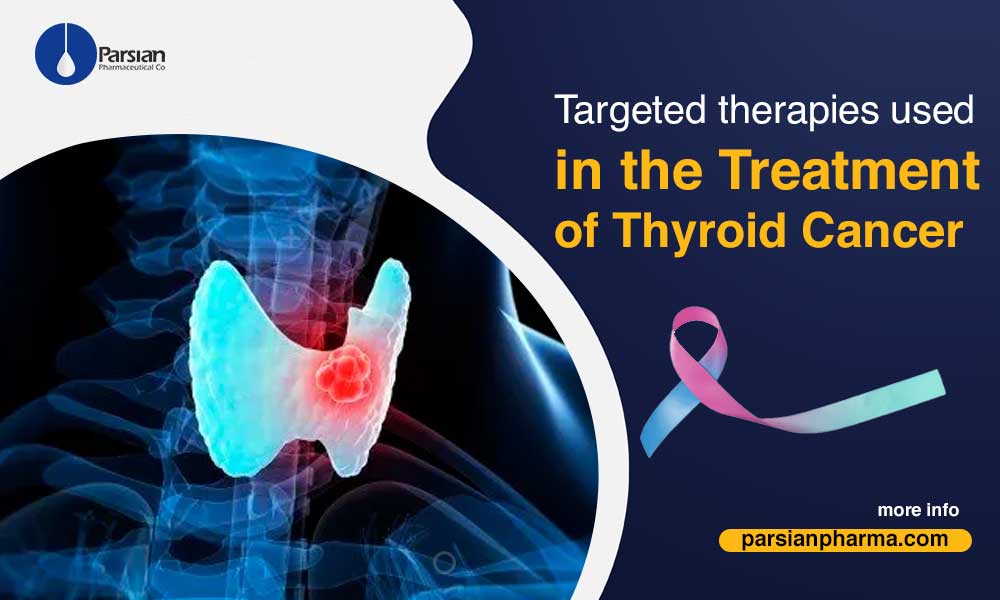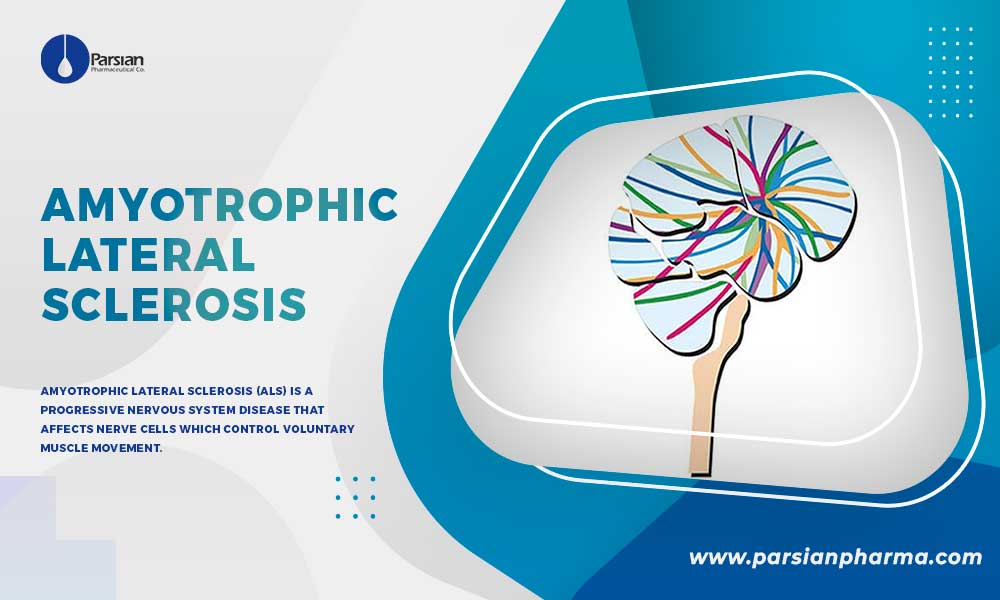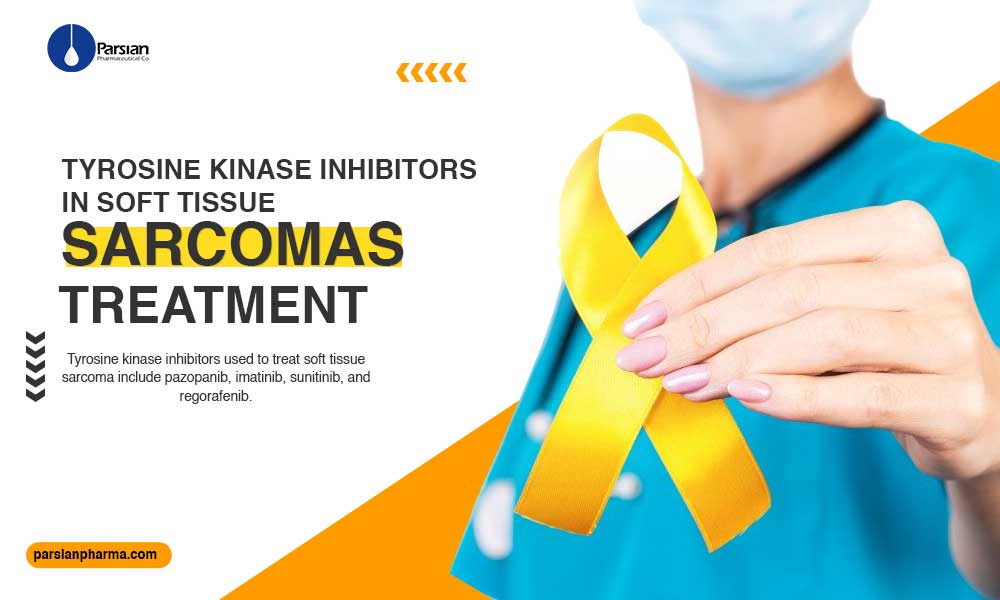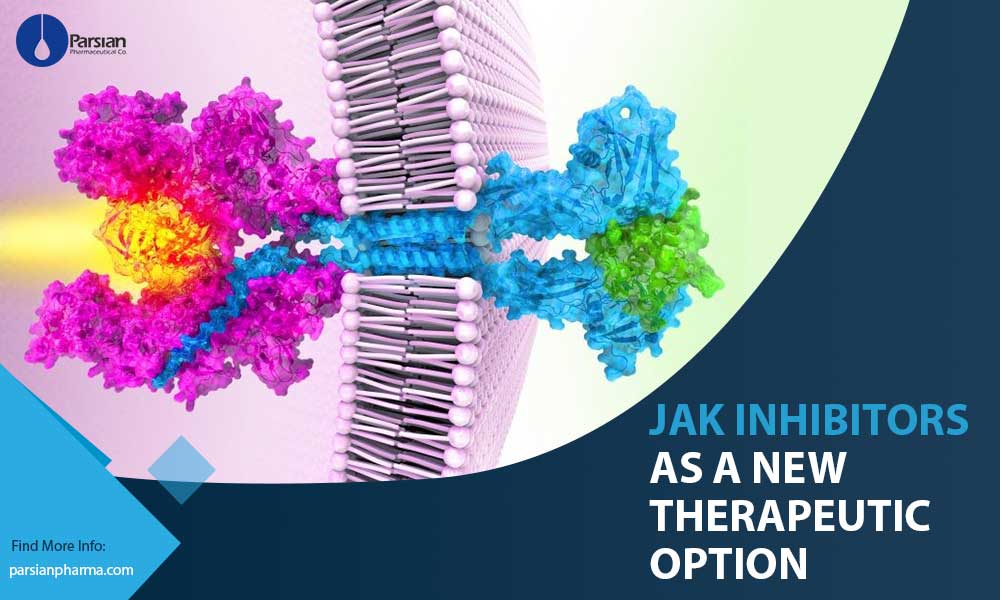Targeted therapies used in the Treatment of Thyroid Cancer
Introduction
Thyroid cancer is a rare type of cancer that affects the thyroid gland; it might not cause any symptoms at first. But as it progreses, the signs and symptoms get appeared, including swelling in your neck, difficulty swallowing, and voice changes. There are four main types of thyroid cancer. These are papillary, follicular, medullary, and anaplastic. Papillary is the most common type. The four subtypes differ in how aggressive they are. Thyroid cancer at the early stages can often be treated successfully. Thyroid cancer rates seem to be increasing. The increase may be because of improving imaging technologies which allow health care providers to find small thyroid cancers on CT and MRI scans done for other disorders (incidental thyroid cancers). Thyroid cancers which are found in this way are usually small and respond well to treatments.
Types of thyroid cancer
Thyroid cancer is classified according to the kinds of cells found in the tumor. It can be determined when a sample of tissue from cancer is examined under a microscope. The type of thyroid cancer is considered in determining the treatment and prognosis.
Four Main Types of Thyroid Cancer:
- Papillary thyroid cancer.This is the most common subtype of thyroid cancer. Patients can get it at any age, but it most often affects individuals ages 30 to 50. Papillary thyroid cancers are usually small and respond well to treatment, even if the cancerous cells spread to the lymph nodes in the neck. Small numbers of papillary thyroid cancers are aggressive and might grow to involve areas in the neck or spread to other parts of the body.
- Follicular thyroid cancer.This rare subtype of thyroid cancer usually affects individuals older than 50. Cancerous cells in the follicular thyroid cancer don’t often spread to the lymph nodes in the neck, but some large and aggressive cancers may spread to other parts of the body. Follicular thyroid cancer most often spreads to the bones and lungs.
Papillary and follicular carcinomas are also known as Well-differentiated thyroid cancers, they are easier to be treated than the other types.
- Anaplastic thyroid cancer.This rare subtype of thyroid cancer grows so quickly and can be difficult to be treated. However, treatments can slow the progression of the disease. Anaplastic thyroid cancer tends to occur in individuals older than 60. It can cause severe signs and symptoms, such as neck swelling that worsens very quickly and may lead to difficulty breathing and swallowing. Anaplastic thyroid cancer Patients should have molecular testing for a mutation in the BRAF
- Medullary thyroid cancer. Medullary thyroid cancer is considered as a neuroendocrine tumor that develops in C cells of the thyroid. The C cells make a hormone called calcitonin that helps maintain a healthy level of calcium in the blood. Elevated levels of calcitonin in the blood is a way to indicate medullary thyroid cancer at a very early stage. Some medullary thyroid cancers are caused by a gene called RETthat’s passed from parents to children. Changes in the RET gene can cause familial medullary thyroid cancer and multiple endocrine neoplasia, type 2. Familial medullary thyroid cancer increases the risk of thyroid cancer. Type 2 of multiple endocrine neoplasia increases the risk of thyroid cancer, adrenal gland cancer and other types of cancers.
Statistics
Thyroid cancer is the seventh most common cancer in women. Women are 3 times more at risk of having thyroid cancer than men. However, women and men die at similar rates. This demonstrates that men have a worse prognosis than women of thyroid cancer. Globally, an estimated 586,202 people were diagnosed with thyroid cancer in 2020, and 43,646 people died from thyroid cancer.
The 5-year survival rate is almost 100% for localized papillary, follicular, and medullary thyroid cancers. The 5-year survival rate for localized anaplastic thyroid cancer is 34%, for regional papillary thyroid cancer is 99%, for regional follicular cancer is 98%, and for regional medullary cancer, is 90%; and for regional anaplastic thyroid cancer, the rate is 9%.
Until recently, thyroid cancer was the most quickly increasing cancer diagnosis in the United States. Researchers believe that part of the reason for the increase was that new, highly sensitive diagnostic tests led to increased detection of smaller cancers. But from 2014 to 2018, the incidence rate dropped by 2.5% annually as more conservative criteria for diagnosing thyroid cancer was used. Thyroid cancer can often be diagnosed at a younger age, compared to other adult cancers.
Pie chart of thyroid cancer types by incidence
Treatment
Treatment for thyroid cancer is based on the type of thyroid cancer and how far it has spread.
The main treatments are:
-
Thyroidectomy – surgery to remove part or all of the thyroid.
- Radioactive iodine treatment – you swallow a radioactive substance that travels through your blood and kills the cancer cells.
- External radiotherapy – a machine is used to direct beams of radiation at the cancer cells to kill them.
- Chemotherapy and targeted therapies – medicines used to kill cancer cells.
You’ll also need to continue care after treatment to check for and prevent any further problems.
The treatment plan
This is depended on the type of thyroid cancer. For example:
- Papillary carcinoma and follicular carcinoma can usually be treated with surgery followed by radioactive iodine treatment.
- Medullary thyroid carcinoma is usually treated with surgery to remove the thyroid and often followed by radiotherapy.
- Anaplastic thyroid carcinoma cannot usually be treated with surgery, but radiotherapy and chemotherapy can help control the symptoms.
Targeted therapies used in Thyroid Cancer
Newer medicines that specifically target the changes inside cells, which cause them to become cancerous, are now being used to treat some thyroid cancers. These drugs are different from standard chemo drugs, and they often have different types of side effects.
The types of targeted drugs are being used to treat thyroid cancer are known as kinase inhibitors, kinases are proteins inside cells that normally relay functional signals. Blocking certain kinases can help treat some cancers.
Targeted drugs for medullary thyroid cancer
Doctors have been especially interested in finding targeted medicines to treat medullary thyroid cancer because thyroid hormone-based treatments, including radioactive iodine therapy, are not effective against these cancers. Two groups of targeted cancer therapies can be used in this type of thyroid cancer: RET inhibitors and Multikinase inhibitors.
Multikinase inhibitors
Vandetanib is an example of multikinase inhibitors (drugs that target several different kinase proteins). Vandetanib can affect both cancer cells themselves and the growth of new blood vessels (which tumors need to grow). Vandetanib is a potent and selective inhibitor of VEGFR (vascular endothelial growth factor receptor), EGFR (epidermal growth factor receptor) and RET (RE-arranged during Transfection) tyrosine kinases.
Multikinase inhibitors can be used to treat advanced MTC, and can stop cancers from growing for a time. They are taken in pill form once a day.
RET inhibitors
In some medullary thyroid cancers, cancerous cells have certain changes in the RET gene which cause them to make an abnormal from of the RET kinase protein. This abnormal protein helps the cells grow.
Targeted drugs for papillary or follicular thyroid cancer
Fortunately, most of these two type of cancer can be treated effectively with surgery and radioactive iodine therapy, so there is less need for other medicines to treat them. But when those treatments aren’t effective, targeted medicines can be helpful.
Multikinase inhibitors
Lenvatinib and sorafenib are targeted drugs known as multikinase inhibitors, because they can block several different kinase proteins. These drugs work in 2 main ways:
- They help block tumors from forming new blood vessels, which the tumors need to grow.
- They target some of the proteins made by cancer cells that normally help them grow.
Sorafenib and Lenvatinib can often help stop cancer development for a time in patients with differentiated thyroid cancer (papillary or follicular) whose treatment with radioactive iodine is no longer effective.
RET inhibitors
In some papillary and follicular thyroid cancers, the cells have certain changes in the RET gene which cause them to make an abnormal from of the RET kinase protein. This abnormal protein helps the cells grow.
TRK inhibitors
A small ratio of thyroid cancers have changes in one of the NTRK genes. These gene changes can help cancer cells grow.
The most frequent subtypes of thyroid cancer are papillary, follicular, and medullary thyroid cancers which parsian pharmaceutical Co. has manufactured some useful FDA approved targeted therapies of them.
You can obtain more information regards mechanism of action and indication of these kinds of targeted therapies in the portfolio list of our products.
Related products:
References:
https://thyroidresearchjournal.biomedcentral.com/
https://www.spandidos-publications.com/











